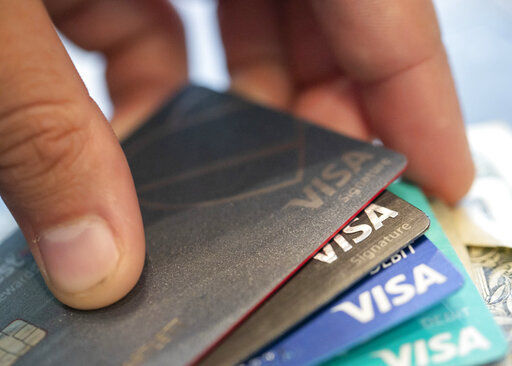With more than $195,000 in student loan debt, Annika Hudak saw little harm in swiping her credit cards.
“I was in the mindset that I’m going to be in debt forever, so what’s a couple of thousand dollars here,” says Hudak, 25, a product analyst in Oregon.
Hudak eventually racked up about $20,242 across four credit cards by charging food, textbooks, school supplies and other expenses. Like her, many borrowers also have other forms of education debt outside of student loans, including 21% who hold credit card debt, according to a recently published Federal Reserve report based on 2020 data that explores the economic well-being of U.S. households.
In college and in the first years of her career, she hadn’t found her financial footing. It wasn’t until she heard others’ debt payoff stories on YouTube and other platforms that she felt hope, learned money management skills and found a road map to pay down debt.
In January 2020, she began her debt-free journey and paid off all credit cards before the year’s end. Here’s how.
KNOW YOUR GOAL, AND YOUR OBSTACLES
Hudak set a goal to become debt-free by 30, envisioning goals like building wealth or buying a house. She jotted down all her debts as she went along to get a full picture of the amount owed.
She also looked at expenses. It’s important to review credit card and bank account statements to see where money is going, says Jeffrey Arevalo, a financial wellness expert with GreenPath, a nonprofit credit counseling agency. Look for opportunities to cut back on unnecessary purchases like unused subscriptions.
Hudak builds her budget months in advance to plan debt payments. “It’s definitely a trial-and-error process, and you have to find what works for you,” she says.
CHOOSE THE RIGHT GET-OUT-OF-DEBT METHOD
When exploring ways to pay off credit card debt, checking your credit score in a credit card issuer’s mobile app is a good way to know where you stand with options.
A balance transfer credit card , for instance, typically requires a good FICO credit score of 690 or higher. This option lets you move debt from a high-interest credit card to one with a lower interest rate, typically for a fee of 3% to 5% of the amount transferred. The money saved on interest can be applied to your balance, cutting down the time it takes to pay off the debt. The ideal balance transfer card has no annual fee, a 0% intro APR and a low balance transfer fee.
“Look at the cost of the fee versus the savings and interest,” Arevalo says. “That interest savings a lot of times is going to be a big benefit.”
Hudak was approved for a balance transfer with a 0% introductory APR over seven months in January 2020.
The amount transferred can only be as high as your credit limit. For Hudak, that meant she was able to move slightly less than half of her highest credit card balance to the new card. The remainder of that balance was subject to a 26% interest rate, so two months later, she applied for another balance transfer card through her credit union, which offered an APR of 8.99%.
DETERMINE YOUR PAYMENT STRATEGY, SET A DEADLINE
Hudak stopped using her credit cards and aimed to pay off one of them over that initial seven-month promotional period. She used a debt reduction calculator to keep track of how long it would take to pay off all her cards.
Hudak tackled smaller debt amounts first — known as “the snowball method ” — to get instant gratification and stay motivated with every balance paid. Another approach, “the avalanche method,” would be to pay down high-interest debt first. Choose the method that works for you.
Her plan also included earning extra income to put toward debt. She retained her full-time job amid the COVID-19 pandemic and had some side gigs. She taught children at a virtual coding camp, edited videos and got paid for other as-needed tasks.
TRACK YOUR PROGRESS
Hudak stayed motivated with a budgeting app to count every dollar. She also used a bullet journal and a spreadsheet to track combined debts and celebrate small victories.
She says she paid off the first card in June and by November 2020, at age 24, she had wiped out her credit card debt completely. After that milestone, she put her energy and money toward her car loan and paid it off in February . Her efforts are now on demolishing that six-figure student loan.
“I think staying focused is my biggest goal and also the hardest one because now that I’ve paid off those smaller debts, I don’t have that next win anytime soon,” Hudak says.
Hudak aims to be debt-free by 2026 and is now on the other side of the YouTube camera. She hopes her channel, Annika Hudak, will be one source of income as she documents her debt-free journey to show others it’s possible.
This article was provided to The Associated Press by the personal finance website NerdWallet. Melissa Lambarena is a writer at NerdWallet. Email: mlambarena@nerdwallet.com. Twitter: @lissalambarena.


